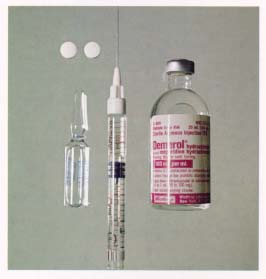Pollution can cause cancer and seizures in marine mammals
Have you ever wondered if animals get cancer?
Just like people, animals can become sick and die from cancer.
A recent study by scientists at the Wildlife Conservation Society reports that cancer is a leading cause of death in marine animals, and a major cause of cancer in animals is pollution. Just as pollution can cause cancer in humans, pollution also causes cancer in animals.
Sea turtles living in polluted waters have high cancer rates. Endangered green sea turtles are especially prone to tumors on the skin, lung, liver, kidney, and heart.
Bottom-feeding animals such as beluga whales, catfish, and sole are also susceptible to cancer. These animals are continually exposed to seafloor sediments which absorb harmful industrial toxins. Cancer kills beluga whales living in the polluted St. Lawrence River estuary in Canada. Nearly 20 percent of all beluga whale deaths are attributed to cancer, and over 25 percent of adult beluga whales have tumors.
Beluga whales are affected by man-made pollution from factories on the land near the St. Lawrence River. However, animals can also be affected by naturally occurring pollutants and toxins that exist in the environment.
Some algae are toxic when they naturally occur in high amounts. The result is a red tide. Red tides may affect and kill marine animals such as shellfish, fish, birds, and marine mammals.
Some red tides are caused by natural oceanographic events such as El Niño. Coastal upwelling, where nutrient-rich water is lifted from the ocean depths towards the surface, may also cause red tides. As human-induced climate change raises sea surface temperatures and increases the frequency of major coastal storms, some scientists predict an increase in red tides.
Other types of human activity may cause red tides. Agricultural runoff contains large amounts of algae "food" (nitrates and phosphates) and may cause red tides. The ever-growing human population will only increase demands on agriculture. As a result, the frequency of red tides is likely to increase.
California sea lions have been feeling the effects of red tides over the past decade, according to researchers at the national Oceanic and Atmospheric Administration in Charleston, S.C., and the Marine Mammal Center in Sausalito, Calif.
Domoic acid, a toxin present in some plankton, causes reproductive problems and seizures in otherwise healthy sea lions. Domoic acid works its way up the food chain. First, sardines and anchovy feed on the plankton. Then, sea lions eat the sardines and anchovies. Mothers can even pass on the toxin to their pups.
Closer to home, 14 humpback whales died in December 1987 as a result of eating mackerel which had fed on a toxin in plankton. Most of these whales washed up around Cape Cod.
Pollution is a major problem, on both land and sea, and it will not go away easily or quickly. Only through wide-scale change may sustainable solutions be implemented to clean up our waters, making them healthier for wildlife and humans alike.
Seventy percent of Earth is covered by oceans. As individuals, we can engage in simple, everyday activities to lighten our load on the planet:
Buy organic produce at local farmers markets this summer.
Use reusable water bottles and cloth shopping bags.
Plant a tree.
Recycle.
Pick up litter on the beach.
Cut back on your meat consumption.
Use compact fluorescent bulbs and remember to turn off the lights when you leave a room.
Dry your clothes on a line instead of in the dryer.
Carpool or take public transportation.
Collectively, we can also make a difference in two major ways: policy and education. These topics will be the focus of my upcoming columns.
Dr. Heidi Pearson, PhD, is the assistant director and stranding coordinator for the The Whale Center of New England, based at 24 Harbor Loop in Gloucester. You can contact her and the center via phone at 978-515-5001, via fax at 978-281-5666, or by visiting www.whalecenter.org. The center's stranding hotline is 978-281-6351.







 There is currently no clear explanation. Some have speculated that it may be related to the narcotic pain drug,
There is currently no clear explanation. Some have speculated that it may be related to the narcotic pain drug, 